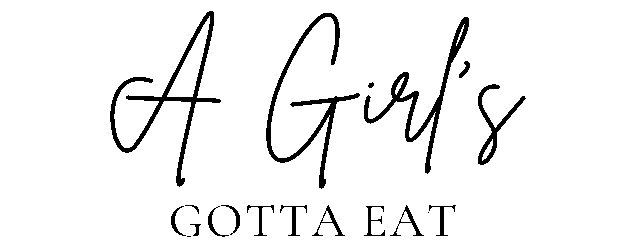Passive Income vs. Active Income: What’s the Difference?

The whole reason why I started this blog is to teach you the many ways you can use your skills, knowledge, and the internet to make money online. You’ll notice that “passive income” is a common theme around here, and it’s something you’ll definitely want to have a good understanding of if you’re trying to start a business and make money online.
There are two ways to make money in our society: by earning active income and passive income. Both have their pros and cons, but you’re going to want sources of both in your life. Let’s get into it:
What is Active Income?
Investopedia defines Active Income as this:
Active Income is income for which services have been performed. This includes wages, tips, salaries, commissions and income from businesses in which there is material participation.
This is the classic “exchange your time for money” type of work, which is the most common way to make money in our society, and the most widely accepted. Whether you’re flipping burgers at McDonald’s, developing apps at a tech startup, or writing articles for freelance clients, you’re working for active income.
Active Income Pros:
- Consistency – you know where your money is coming from and how much you’re getting paid
- Set schedules make it easy to separate work from real life
- You know you’ll get paid for your work
Active Income Cons:
- You have to be working to make money
- Difficult to have more than one source of active income
- You only have 24 hours in a day, and can only work/earn so much at a time
We’ve been trained to think that active income is the most secure form of income. If you’ve ever received a regular paycheck in exchange for sitting at a desk for 40 hours a week, you know the sense of security it can provide. However, if you’ve ever been knocked out by the flu and missed several weeks of work with no pay, or if you’ve ever had a boss who decided they no longer wanted you working for them, you also know how much it can screw you and put you behind on bills. That is when it helps to have a source of passive income on top of your active income source.
What is Passive Income?
Passive Income, according to Investopedia: Earnings an individual derives from a rental property, limited partnership or other enterprise in which he or she is not actively involved.
In other words, you have an asset that makes you money at any time, whether you’re working on it or not. Think landlords. Book royalties. The stock market. Something that isn’t dependent on your physical presence to make money. (Don’t worry – there are far more interesting forms of passive income than the stock market, which we’ll cover in a minute.)
Passive Income Pros:
- Once you do the work on a passive income project, you can sell it an infinite amount of times
- Make money while you’re sleeping, vacationing, playing Candy Crush on the toilet
- Your presence is not required to make money
Passive Income Cons:
- Often requires an upfront investment of time or money, depending on what you’re doing (rental properties will require your cash (and probably some time), writing a book will require your time (and probably some cash)).
- No guarantee of a return – just because you made or bought something doesn’t mean people will give you money for it.
- It can take days, weeks, months, even years for you to make a return on a passive income-producing investment. Passive income can make you rich, but it’s definitely not a get rich quick scheme, and it takes time to earn good money with it.
I talk a lot about passive income on this blog, for one main reason: passive income is freedom.
If you currently live on active income, imagine what it would be like to be able to take unpaid time off from your job without worrying about whether you’ll have money to pay bills. Imagine not having to worry about what would happen if you were laid off, or the company you work for went out of business. That’s the kind of freedom I’m talking about.
The people who could benefit from passive income the most – those of us in the middle class or lower who live paycheck to paycheck – are the least likely to have multiple income streams. The entire reason I started this website is to change that.
I want you to experience the freedom that passive income has brought to my life, and I want you to know how to support yourself and your family without having to give up all of your time to pay bills. Whether you would like to make enough passive income to survive or just enough supplemental income to take your kids to the movies more often, it’s easier than ever to make that happen with the help of the internet.
Some of these methods will require a large time investment, while others will take some serious upfront cash. The more of either that you can afford to put into your passive income project, the more quickly you’ll see a return. It’s important to remember that while most of these can be done at your own pace, with just a few extra hours a week dedicated to making it a reality, they still take WORK. “Passive income” does not mean “do the bare minimum and watch the cash faucet flow”. You have to be willing to put in the work, even if you’re unsure of how much you’ll make in the end.
Let’s get into some of the best passive income ideas to help you make money online:
Print-On-Demand Store
I’ve been running online shops using a print-on-demand service for three years. If you’re interested in starting a business, it’s one of the best first steps you can take. It’s similar to drop shipping, but instead of buying cheap knockoffs from AliExpress, you’re designing products yourself (and it’s not nearly as hard as it sounds).
If you’ve always thought about running an online boutique but you don’t have money to invest, you don’t know where to start, and you don’t even know what to sell, this is one way to create a brand and sell products you’ve designed yourself without investing in, well, much of anything.
To learn more, check out my post on why I think print-on-demand is the perfect starter business and how I use it to run my shops.
Content Creation (Start a Blog/YouTube Channel/Podcast)
The internet has given us access to other people in a way that has never existed in human history. That’s… pretty fucking cool, so take advantage of it by creating valuable content that helps people do/learn/feel something. You can create content through blogs, vlogs, YouTube channels, podcasts… whatever medium you enjoy the most. If you put in the work to create valuable content that people want to read, you’re setting yourself up to make money.
What’s great about blogging is that it’s infinitely scalable and you can easily monetize it without selling your soul. Check out this post on the most common ways to monetize your content.
Sell digital products
Digital products are a great source of passive income because once you create the files, you can sell them forever. If you sell them on Etsy, you can make a listing, set the quantity to 999, and have the files automatically delivered to the customer. Once the files are uploaded, you don’t have to lift a finger. Doesn’t get much more passive than that.
Selling digital products is helpful if you have an audience of people to sell to. This is why starting a blog/creating valuable content is a great first step toward a digital product empire. Here’s a list of 20 digital products you can sell on Etsy for passive income.
Book sales
Book royalties are one of the oldest forms of passive income in the book (heh), but also one of the most time-consuming (even more than blogging).
I recommend practicing with a blog first, that way you can build an audience willing to buy your book and you’ll know what people want to hear from you. You’ll also find out whether you like to write – an essential and often overlooked part of the book-writing process. We all think that writing is intuitive and that the ideas will flow as they come, but plenty of bloggers and authors have learned the hard way that it’s much more complicated.
So yeah, maybe see if you can handle writing a blog before writing a book, but if you do write a book and people like it, the money you’ll make will be well-earned and passive. Ash at The Middle Finger Project snagged a $200,000 book deal with Penguin Random House, and she’s sharing all about the process if you’re interested in learning about publishing.
Real estate and rental properties
An even more classic form of passive income is money collected as an owner of rental properties.
As a millennial, I don’t know anything about real estate ownership but if I ever find out I’ll report back. All Property Management is an informative blog I found that’s filled with advice for rental property owners.
Investments & Savings Accounts
Again – millennial here, so things like “high-yield savings accounts” and “dividend stocks” are not part of my overall banking experience, but it’s one way that people accumulate more wealth – by investing in something they believe in (or just believe will make them money) and allowing it to grow their wealth as it sits in the bank.
The College Investor has some great information on high-yield savings accounts.
Thinking about investing in the stock market? Ellevest is an investment platform designed to help women invest their money while helping to narrow the income gap between men and women. When you use Ellevest, you’ll also help fund loans that support women-owned businesses and community services.






